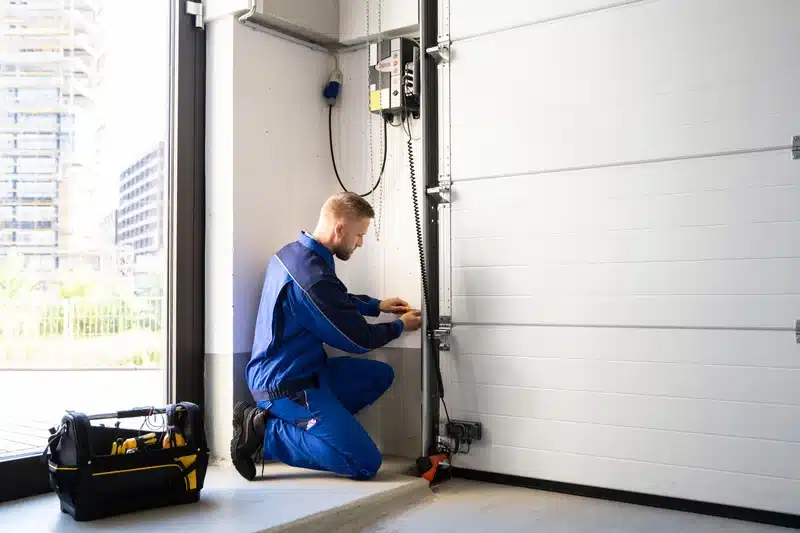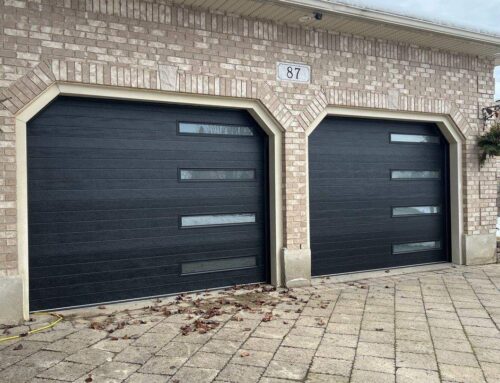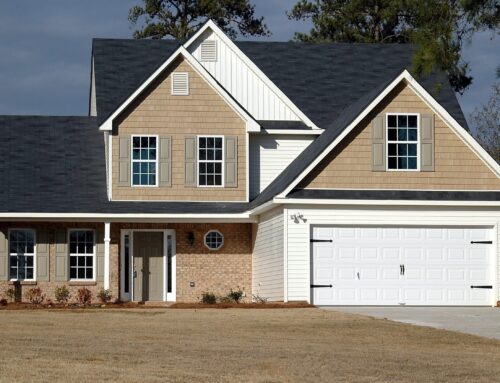Hinges may seem like a small part of your garage, but they play a major role in your garage door operations. Connecting the door panels to maintain alignment, they allow the door to fold at certain points to ensure flexibility.
Because hinges are such a vital garage door component, it’s necessary to understand the varieties, how to care for them, and how to replace them. In this blog we will review the different types of garage door hinges, maintenance and replacement tips to ensure your door offers optimal functionality.
Functions of Garage Door Hinges
Garage door hinges are essential to your garage door’s functionality. They connect the door panels to ensure they fold correctly when the door opens. They also distribute the door’s weight, which is especially essential with double-wide doors. They reduce strain that results in wear and tear and can help avoid any costly repairs.
Broken hinges could lead to various safety concerns. They can cause your garage door to malfunction and possibly fall on objects or passers-by. They can also make your garage door weak which may make your home vulnerable to intruders.
Types of Garage Door Hinges
There are various garage door hinge types to choose from. They include:
- Standard Plate Hinges: These most commonly used hinges connect the panels of roll-up garage doors so they operate smoothly. They feature a simple yet durable design that minimizes the risk of malfunction. They are typically numbered chronologically so users can easily determine their installation position.
- Wide Body Hinges: As the name suggests, wide body hinges are wider than standard plates. Their broad design helps with weight distribution for large, heavy garage doors. They prevent sagging and reduce strain on any part of the door.
- Strap Hinges: Strap hinges are typically installed on side-hinged or swing-out garage doors. They are thinner than other hinges, but they are made of durable materials.
Maintenance Tips for Garage Door Hinges
With the right care, garage door hinges should last 10-15 years. Here are some tips that will ensure they withstand the test of time.
Find the Right Garage Door Hinge Numbers
Each garage door hinge is assigned a number. Residential hinges are numbered from 1-5, commercial hinges are numbered from 6-11.
The numbers tell you where the hinges should be installed. So the first number will be located between the first and second panel, the second number will be located between the second and third panel, and so on.
Choose the Correct Gauge
Garage doors come in various gauges. The most common gauges are 11 and 14, although 16 and 18-gauge hinges are also available. The higher the gauge number, the thicker and stronger the hinge will be. Depending on what size and type of door you have, you may need a larger gage.
Most home garage doors do well with a 14-gauge hinge. Larger commercial garage doors may be better off with a 16 or 18-gauge hinge.
Maintain Your Hinges
Maintain your hinges by keeping them clean. Remove debris to prevent rust and decrease stress on your garage door. Make sure to use WD-40 to lubricate them regularly to avoid any squeaky hinges.
Don’t do anything to unevenly distribute weight on one side or section of your garage door or pull the door open if it’s jammed. These actions could affect your garage door hinges alignment. Instead of forcing anything open, determine what’s causing the problem or jam and address it at its root.
Replacing Garage Door Hinges
If your garage door makes odd noises or seems to be misaligned or unstable, you may need a garage door hinge replacement. Before starting, you should disconnect the power and put on protective gear like gloves and goggles. Secure the door by propping it up with locking pliers or C-clamps.
Work with a friend to increase safety. Keep your tools organized to promote efficiency and reduce the risk of mishaps.
Once you are ready, you can replace garage door hinge using the following step-by-step guide:
- Determine which hinge you want to replace. If it’s a new installation, determine where the hinge will be installed and make a mark to guide you.
- Use a screwdriver or wrench to remove the old hinge. Simultaneously, hold on to the panel to prevent it from shifting or falling.
- Place the new hinge in place ensuring it aligns with the screw holes.
- Screw or bolt the new hinge to secure it. Avoid over-tightening which can damage the hinge or door panel.
- Test the door to ensure it opens and closes smoothly.
- Reconnect the power.
- Perform regular maintenance to ensure your door and hinges provide long-term functionality.
Front Range Raynor Will Ensure Your Garage Door Operates Smoothly
Garage door hinges may seem like a small part of your garage door, but they play a crucial role in its operation and functionality. Maintenance and proper care will ensure an optimal lifespan. As well as prevent future safety risks and expensive repairs.
Front Range Raynor is your source for long-term garage operation. We offer superior products that withstand the test of time. We provide garage door service including emergency service, repairs, parts, and installation.
Contact us to learn how we can keep your garage operating efficiently.








